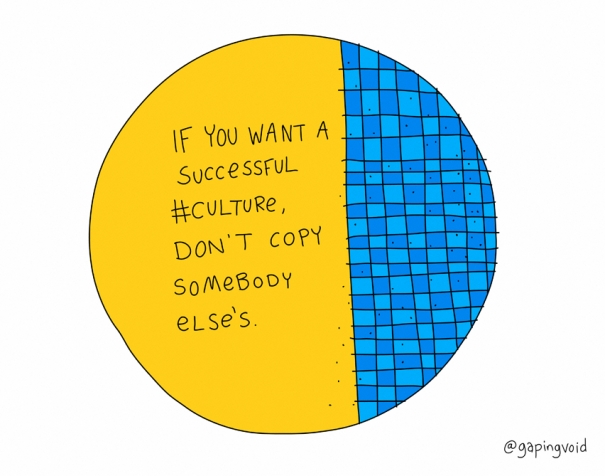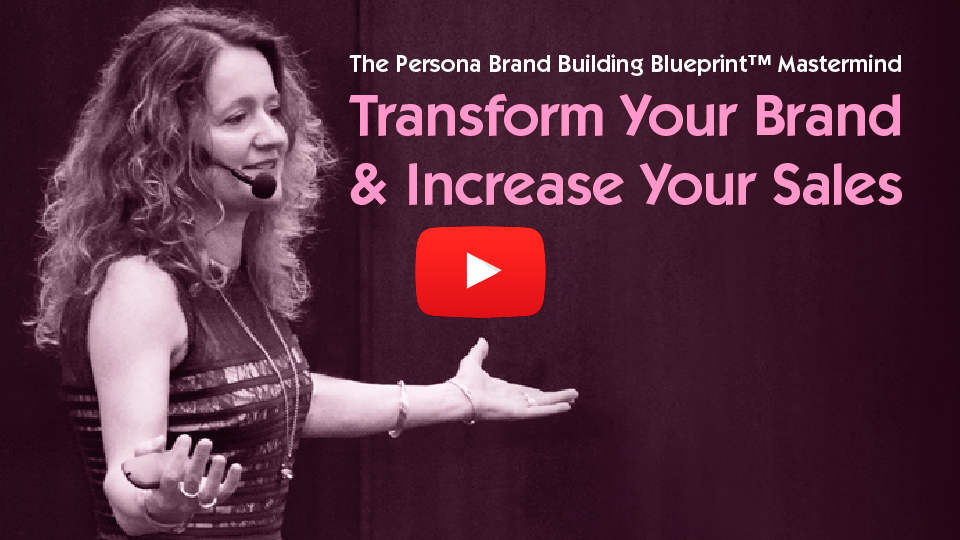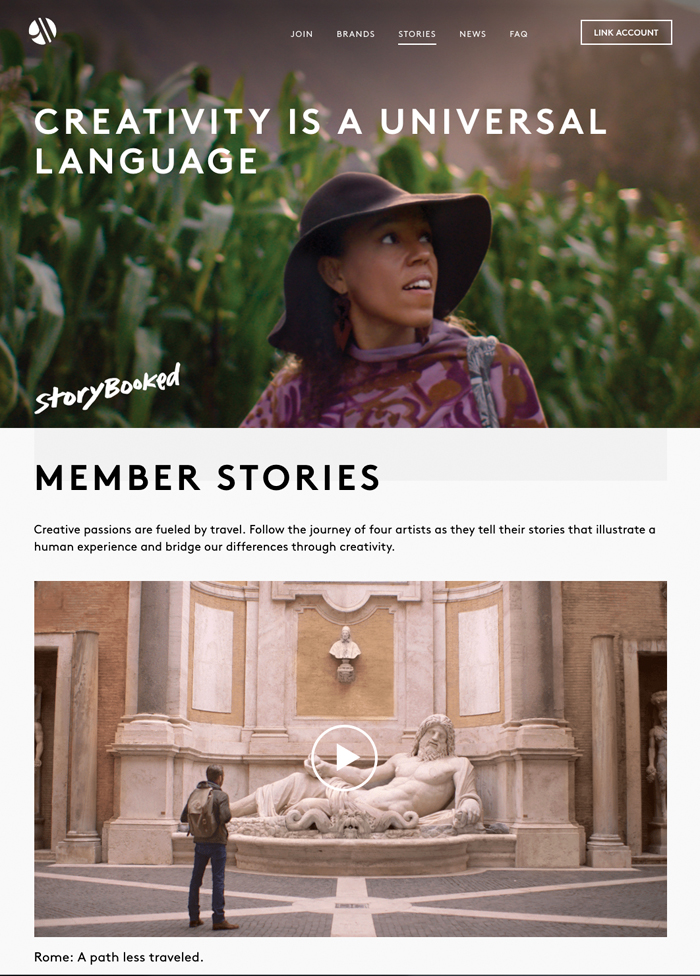Redefining Your Brand Culture After a Rebrand, Sale or Merger
When you think about a positive brand culture, what comes to mind? You might envision some of its tangible manifestations, like bean bag chairs or Friday happy hours. While admittedly fun, these examples unfortunately only scratch the surface of what brand culture means.
A truly positive brand culture goes beyond words on paper and frivolous office perks. It’s about being clear on your brand purpose and setting strong, clearly articulated brand values and living them out as a company, both internally and externally, every day. When implemented effectively, a strong brand culture breeds a positive public image and better retention rates, not to mention revenue growth [1].
Brand culture, however, is a notoriously elusive concept, and one that becomes even trickier to master in the wake of a sale, merger or rebrand. In the case of a merger or acquisition, you’re faced with not just one, but two unique brand cultures that must be merged in a strategic and authentic way. And in the case of a rebrand, you must reconcile the old with the new. If your company has recently undergone any one of these major changes, it’s time to take a magnifying glass to your brand culture and take steps to redefine it.
Why Redefining Brand Culture Matters
If a rebrand, sale or merger has recently taken place within your company, you’re no stranger to change. From a re-evaluated, newly profiled and codified brand to an updated brand identity to a new employee handbook, you’ve probably already signed off on your fair share of updates to your brand. With so much in flux, it might be tempting to push aside defining your brand culture as a non-essential, or worse, as unnecessary. Brand culture, though, must not be left to chance or viewed as an afterthought. It impacts every part of the business, from employee satisfaction to productivity and profits.
Related: The Impact of Company Brand Culture On Driving Performance and Increasing Sales
For starters, a strong brand culture has a direct impact on your ability to retain top talent. According to a Columbia University study [2], the average likelihood of employee turnover at an organization with great company brand culture is 13.9%, whereas the likelihood of turnover in poor company cultures is more than triple that, at 48.4% so strong brand culture is a major competitive advantage.
Not only does a positive brand culture motivate employees to stick around, it also prompts them to get more done because it cultivates a strong sense of purpose, something bigger than the individual, all of which enhances job satisfaction. Happy workers are 12% more productive than the average worker, while unhappy workers are 10% less productive [3].

Image via ©Hugh MacLeod, Gapingvoid
Finally, and perhaps most importantly, a strong brand culture results in engaged workers, which are unilaterally linked with greater profits. Organizations with employees that are consistently engaged produce 10% higher customer satisfaction ratings and 20% higher sales, on average, than those with employees who are not regularly engaged with their work [4].
You can’t identify and define your brand culture without first codifying and mapping out your brand. If you need a hand with this crucial task, feel free to get in touch. We’ll develop the communications system for you that provides structure and guidance for all points of contact within a business, both internally and externally with your customer. Discover more about our brand strategy solutions here. We’ll also provide you with an action plan for successfully putting your brand to work internally and externally and direction with implementation too.
Because your brand strategy is the bedrock foundation underpinning your whole business it provides you with your road map for achieving specific brand goals aligned with your business plan. Discover more about our brand strategy service here.
You can also work with us to develop your brand strategy and brand culture through one of our Transformational Workshops, Masterclasses, Mentoring and Training. When you work with us on your brand in the Persona Brand Building Blueprint™ Mastermind you’re empowered to build and leverage your standout №1 brand. In fact, after two days of working with us on your brand you leave with your brand strategy fully developed, documented and ready for implementation in the business.
Four Key Areas to Re-evaluate in Your Brand Culture
When redefining your brand culture after a rebrand, sale or merger, it’s important to consider four key areas:
- Your Values
- Your Leadership
- Your People
- Your Customers
1. Your Values
Gradifi is a startup that gives employers an easy way to offer student loan repayment as a perk to their employees. In 2016, the company (which, at the time, was made up of less than 30 employees) was acquired by financial giant First Republic bank [5]. First Republic is a multi-billion-dollar company with more than 60 offices across the United States.

Image via Gradifi
The acquisition could have easily cost Gradifi its values, getting swept up and swallowed whole by the culture of its new parent company. Instead, the startup doubled down on its brand mission to do its part in making a dent in America’s ever-growing student debt crisis. Gradifi enlisted the support–both in branding and financial resources–from its new parent company to bolster its core values. As a result, it was able to offer its customers more financial stability via First Republic’s $68 billion portfolio of assets [6].
Gradifi is a perfect case study in using a merger or acquisition to strengthen rather than dilute your brand culture. After a sale or merger, find ways in which your new partner can support your brand values in a way that complements your existing efforts, or in new ways that you may not have been able to execute on your own.
2. Your Leadership
Independently, Hackensack University Health Network and Meridian Health were two of the largest hospital systems in their state. When the two merged in 2016, it was under the leadership of two strong personalities: Hackensack’s Robert C. Garrett and Meridian’s John Lloyd.

Co-Chairs: Robert C. Garrett and John Lloyd
It was a time of uncertainty for the healthcare industry as mergers advanced at a faster clip than ever before. In an effort to streamline the transition and position the new, combined brand for success, the organizations made an unusual decision. Rather than transitioning leadership to a new CEO, the companies opted to keep both Garrett and Lloyd in place to serve as co-chairs.
Though unorthodox, if we turn our attention to the impact of leadership on brand culture, the decision comes as no surprise. Hackensack Meridian’s new leadership structure works–very well, at that–because both leaders shared a clear, common brand vision that they’ve defined as the “continuum of care.”

Image via Hackensack Meridian Health
According to the co-CEOs, this means care doesn’t end when the patient leaves the hospital, but extends into the community and its programmes [7]. The brand has codified this vision into every element of its business model. The new hospital network is ranked number one in New Jersey and consistently wins top honors in nationwide rankings.
Related: CEO Brand Leadership, How Vision Drives Brand Growth
No matter what your new leadership structure after a merger or acquisition, brand culture directives must come from the top and not the other way around. To ensure brand culture success, your leader must actively take charge in defining and executing on it in a way that fits within and supports your brand strategy.
A memorable, profitable brand starts with a solid strategy. The Persona Brand Building Blueprint™ Mastermind empowers you develop yours with our support and leadership! In this highly interactive, two-day live mastermind, you map out, codify and document your brand and leave with a clearly defined brand strategy to underpin and guide all of your business objectives. Reserve your place in our next Brand Building Mastermind now.

Build your standout brand at the Persona Brand Building Blueprint™ Mastermind with Lorraine Carter
3. Your People
When drugstore chain Walgreens rebranded in 2017, the move was much deeper than just a new tagline and service offerings (as all rebrands should be). The company introduced a revamped brand culture with employees at the centre [8]. At every turn, the brand culture is informed by an iron-clad brand promise: “We’re here to help everyone – every day. Beyond a new tagline, we hope to reflect where our brand is headed in the future with new initiatives and services that align to our brand promise: to always to be here to help you feel good.”[9]
Watch one of the installments from Walgreens’ rebranding video campaign, which is underpinned by a culture where employees are on the front lines to execute the brand promise:
In a rebrand, you’re likely doing some heavy lifting on visual elements like your brand packaging, brand identity and brand collateral, but don’t leave employees out of the equation because they are the most critical factor in your success. Think through not only the relationship your team will have with the updated brand, but the relationship they’ll with have with your customers. Both are core elements of your brand culture.
Related: Maximizing Profitability, Training Your Employees To Be Brand Champions
4. Your Customers
Starwood Hotels and Marriott are two major forces in the hospitality industry, both heavyweights in their own right. When Marriott acquired Starwood in 2016, though, some worried the marriage was a mismatch [10]. Marriott, on one hand, was the traditional mainstay, with a nearly century-long history of dependable, albeit somewhat vanilla, accommodations. Starwood, on the other hand, was the cool, quirky younger brother, known less for legacy and more for hotel rooms that feel like crashing at a friend’s place.

Image via Marriott International
To avoid chaos when the brands combined cultures, they focused on the one thing they have in common — fiercely loyal customers — birthing a new brand culture with customers at its core. In a rare move, the brands opted to allow members of either chain’s loyalty programme to enjoy the benefits of both–including tiered pricing on luxury rooms, which meant more choice and in some cases, much nicer rooms at cheaper rates [11].
Under Marriott’s ownership, the brands have launched a storytelling series spotlighting reward members during their unique travels, further enforcing the customer-centered culture. Marriott and Starwood’s customer-centric approach proves that a merger can be a positive thing for brand culture, so long as the two companies find and focus on their common ground.

Image via Marriott International
Your customers are the final piece of the puzzle after a merger, sale or rebrand. How will the change affect their relationship with your company? Define a brand culture that supports the relationship you want to have with your target market, which should be part of your overall brand strategy.
Related: Company Culture, Your Brand’s Strongest Competitive Advantage
Your brand culture is the summation of what your brand stands for: how you live out your brand purpose, brand personality, brand mission and brand promise in your daily operations. Brand culture isn’t something that “just happens”; it must be carefully considered and codified in keeping with your brand strategy like any other aspect of your business to ensure success after a merger, sale or rebrand.
Don’t leave your brand’s reputation to chance! Take charge in building a memorable, much-loved and highly profitable brand with Brand Strategy Development from Persona Design. We’ll lead the way in this vital branding process and deliver you a complete, easily understood and executable brand strategy that underpins and drives your business goals. We’ll also support you through the implementation process too.
Contact us directly at T: +353 1 8322724 or [email protected] to get started.
Questions To Consider:
- How strong is your brand culture? What are its strengths and weaknesses?
- What are your core brand values? How have they been impacted by your sale, merger or rebrand?
- What is your new leadership structure? How will the leader lead the way in defining and living your brand culture?
- What relationship do your employees have with your brand? What role will they play in executing your brand culture?
- What relationship do you want customers to have with your brand? In what ways does your brand culture support this relationship?
Sources
- https://www.forbes.com/sites/larryalton/2017/02/17/why-corporate-culture-is-becoming-even-more-important/#4771edf969da
- https://academiccommons.columbia.edu/catalog/ac:156625
- https://warwick.ac.uk/newsandevents/pressreleases/new_study_shows/
- http://news.gallup.com/businessjournal/208487/right-culture-not-employee-happiness.aspx
- http://www.sfchronicle.com/business/networth/article/Why-First-Republic-bought-student-loan-repayment-10791909.php
- https://www.firstrepublic.com/frb/shared/repositories/newsroom-folder/2016/12/12/first-republic-bank-acquires-gradifi
- https://www.app.com/story/money/business/main-street/2016/11/04/hackensack-meridian-health-two-ceos/92521496/
- https://www.cnbc.com/2017/12/04/walgreens-unveils-rebranding-effort-as-pharmacy-wars-escalate.html
- http://news.walgreens.com/press-releases/general-news/trusted-since-1901–walgreens-heritage-of-providing-care-helps-define-new-brand-identity-and-campaign.htm
- https://www.nytimes.com/2017/12/09/business/marriott-starwood-customer-loyalty-program.html
- https://www.entrepreneur.com/article/293987





Leave a Reply
Want to join the discussion?Feel free to contribute!